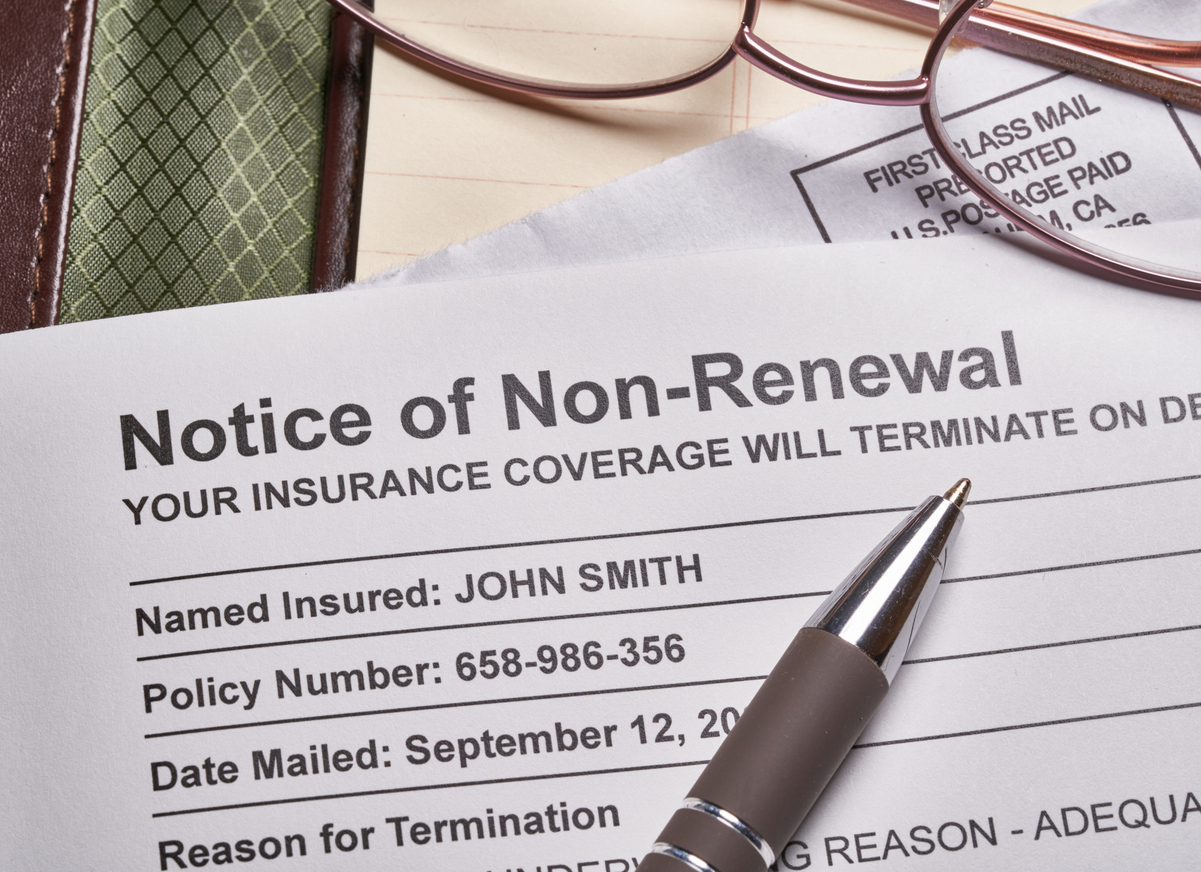The California Supreme Court will soon decide an issue of great importance to California property policyholders: Whether insurers should be required to communicate “complete” replacement cost estimates to insureds when selling homeowner policies.
The 2010 Regulation and Its Intended Purpose
In 2010 the California Insurance Commissioner promulgated a new insurance regulation – §2695.183. The purpose of the regulation was twofold: first, it sought to compel sellers of home insurance to properly estimate home replacement values when initiating or renewing a homeowners insurance policy. The regulation required that if an insurer (or their representative) chose to give a consumer an estimate of the cost of replacing their home, that estimate must factor in square footage, demand surge, the roof, and the main components of the home so as to be complete. In other words, one of the goals of the regulation was to prevent insurers from providing incomplete or misleading information to policyholders that might lead them to believe that they have sufficient replacement coverage, when in fact, they do not. The regulation did not require insurers to provide estimates . However, if insurers chose to do so, the regulation required that the estimate be complete.
The secondary purpose of the regulation was that if insurers or their representative provided any estimate that was incomplete, the estimate would be deemed a misleading communication in violation of California Insurance Code §790.03 (part of California’s the Unfair Insurance Practices Act).
The regulation was set to go into effect on June 27, 2011, and was adopted in response to complaints about underinsurance by Southern California homeowners with losses from the 2003, 2007, and 2008 wildfires. These homeowners found that after the fires they did not have sufficient insurance to repair or rebuild their homes because the estimates of the replacement value of their homes were too low.
The Association of California Insurance Companies’ Lawsuit to Derail the Regulation
The Association of California Insurance Companies and the Personal Insurance Federation of California opposed the adoption of the regulation and filed a declaratory relief action against the California Insurance Commissioner’s successor two weeks before the regulation took effect. The action sought “a declaration that the Regulation was invalid because the Commissioner lacked authority to ‘regulate the underwriting of homeowner insurance’; section 790.03 did not authorize ‘the imposition of a single, detailed method for estimating the replacement cost of houses’; and the Regulation violated insurance companies’ free speech rights under the First Amendment of the United States Constitution.” After the Associations’ motion for judgment on the pleadings was denied, the action proceeded to trial.
At trial, the Associations argued Insurance Code sections 790.10 (part of the Unfair Insurance Practices Act, “UIPA”) did not give the Commissioner the authority to promulgate the Regulation, as claimed, because:
- California’s UIPA merely permits the Commissioner to administer the UIPA, and enforce it as to unfair methods of competition that are already defined, and the legislature’s definition of unfair methods of competition, codified in section 790.03, does not include the conduct addressed by the Regulation (in other words, the Commissioner does not have authority to create new categories of “unfair insurance practices);
- The Commissioner, in enacting the Regulation, did not follow the procedures required by section 790.06 for enforcement against unfair methods of competition not otherwise defined;
- Estimates that do not comply with the format required by the Regulation would be deemed as “unfair and deceptive,” even if the estimate is otherwise accurate;
- The Regulation impermissibly restricts underwriting, because the Regulation requires all communications, other than those which “never come to the attention of an insured,” to comply with the Regulation, while, in practice, many internal communications do come to the attention of the insured; and
- The Regulation does not satisfy the higher standard for government restriction of speech as announced in Central Hudson Gas & Elec. v. Public Serv. Comm’n, 447 U.S. 557 (1980).
In response, The Commissioner argued that:
- The Commissioner’s authority is based on Insurance Code section 790.10 and the UIPA, which “must be construed broadly ‘to promote public welfare,’” citing to case law to support this position (Calfarm Ins. Co. v. Deukmejian, 48 Cal. 3d 805 (1989), Credit Ins. Gen. Agents Assn. v. Payne, 16 Cal. 3d 651 (1976), and Ford Dealers Assn. v. Department of Motor Vehicles, 32 Cal. 3d 347 (1982)) ;
- “The Commissioner has authority to promulgate a regulation prohibiting a specific type of misleading statement from being communicated to purchasers of homeowners insurance.” This argument specifically addressed the Associations’ argument regarding section 790.03’s definition;
- Section 790.06 is an enforcement tool, not a mechanism for adding new categories of unfair and deceptive practices;
- The Associations’ argument regarding accuracy is taken out of context and is misleading because the Regulation does not expect insurers to guarantee accuracy;
- The Regulation does not regulate underwriting as it does not dictate what risks a company should underwrite, and does not preclude insurers from setting the amount of insurance to be different than the estimated replacement cost; and
- The Associations’ claim of speech restrictions is evaluated under Zauderer v. Office of Disciplinary Counsel, 471 U.S. 626 (1985) as a restriction on misleading speech, not Central Hudson.
The trial court agreed with the Associations finding that (1) section 790.03 did not grant the Commissioner the authority to promulgate the Regulation, (2) the Commissioner would have had to adhere to the procedure provided in section 790.06 to render a new type of conduct not specified in section 790.03 as misleading, which he did not do; and (3) the court did not agree with the Commissioner’s interpretation of the case law pertaining to his authority being broadly construed to promote the public welfare.
The Appeal
The Commissioner appealed the decision and argued:
- The trial court conflated “accurate” and “misleading” because the Regulation’s focus is on “completeness”, not “exactness”, to prevent the situation where an insured relies on an estimate that does not include all necessary components;
- The trial judge erred in treating section 790.06, an enforcement tool, as a substitute for a rulemaking processes; and
- The trial judge ignored section 790.05, the procedure for an administrative law judge to bring a noncompliance proceeding for unfair and deceptive practices prohibited by section 790.03.
The Associations’ arguments on appeal generally matched those it had made at the trial court.
The Court of Appeal affirmed the trial court’s decision, finding that the Commissioner had exceeded the authority granted him by the UIPA. The court ruled that in the absence of an explicit reference to replacement cost estimates in the UIPA listing of deceptive and unfair practices, it could be inferred that the legislature did not intend to allow the commissioner “to add content and format requirements for replacement cost estimates in homeowner insurance to the list of practices set forth in section 790.03 under the guise of deeming nonconforming estimates misleading under section 790.03, subdivision (b).”1
What’s Next? – California Supreme Court to Weigh In on the Issue
The Commissioner requested the California Supreme Court to review the Court of Appeal’s decision, which the Supreme Court agreed to do. The California Supreme Court directed the parties “to brief and address the question [of] whether the Commissioner has the statutory authority to promulgate a regulation specifying that the communication of a replacement cost estimate which omits one or more of the components in subdivisions (a)-(e) of section 2695.183 of title 10 of the California Code of Regulations is a ‘misleading’ statement with respect to the business of insurance.”2
Last month United Policyholders filed an amicus brief in support of the Commissioner and the Regulation which added several new policy based arguments for the Supreme Court to consider. United Policyholders pointed out:
- the Regulation is a pragmatic approach to alleviate the underinsurance epidemic;
- given the quasi-fiduciary duties owed by insurers to insureds, and the fact that most underinsurance issues arise when an insured relies on an insurer’s agent’s recommendations at the point of sale (which routinely include replacement cost estimates), requiring insurers to provide replacement cost estimates that are complete (or face repercussions when they fail to do so) is in line with the legislature’s intent of requiring insurers to provide insureds with the information needed to make informed decisions at the point of sale; and
- that the lower court was wrong when it found that the Commissioner did not have the authority to promulgate the regulation. Instead, United Policyholders argued that the Commissioner has clear authority under section 790.10 to issue regulations that prevent insurers from engaging in deceptive communication practices.
United Policyholders summarized the dispute nicely in their brief:
The Commissioner adopted the Regulation to protect the public and effectuate the California Legislature’s intent to solve a serious problem that has plagued homeowners throughout California after every major wildfire in the last two decades: Wildfire victims chronically find their policy limits grossly inadequate to cover the cost of replacing their homes, despite the fact that their policies were described at the point of sale as providing “replacement cost” protection. Post-disaster underinsurance is so severe that cities, counties, the American Red Cross and several charitable foundations have partnered with United Policyholders to help solve it after past disasters. Consumer education alone is not solving the problem. The Regulation is a much-needed step in the direction of ensuring that consumers will no longer be deceived or misled about their home insurance at the point of sale. . . .
The Regulation simply requires that if an insurer (or their representative) chooses to give a consumer an estimate of the cost of replacing their home, that estimate must factor in square footage, demand surge, the roof, and the main components of the home so as to be complete. Again – the Regulation merely requires, as does the mandatory disclosure form, that insurers’ communications to consumers not be incomplete. . . .
The fact that [Insurers] prefer to remain free to provide incomplete and misleading information to property owners at the point of sale is not a sound basis for invalidating an important consumer protection regulation. Plaintiff-Respondents participated in the drafting process, got almost everything they asked for, signaled general assent, and then when a new Commissioner took office, mounted the legal challenge that led to this proceeding. The victory Plaintiff-Respondents had scored in the drafting process – an express statement that they have no obligation to provide replacement estimates at all – was apparently not sufficient for them. To accomplish their goal of thwarting the Regulation’s objective, Plaintiff-Respondents misled the lower court by conflating “accuracy” with “completeness.” The Regulation requires completeness, not accuracy.
My Take
Given that (1) most consumers rely on the replacement cost estimates provided by insurance agents to determine if an amount of insurance is sufficient to fit their needs and (2) that contractors are unlikely to be willing to provide estimates for consumers on “hypothetical” construction projects (and won’t generally do so for free) just so an insured can purchase the right amount of insurance, I view the regulation as a sensible solution to the underinsurance problem, especially because the regulation does not require insurers to provide replacement cost estimates at all! It merely requires the insurers that choose to provide replacement cost estimates at the point of sale to provide an estimate that takes reasonably necessary data into account to ensure that the estimate is “complete”. That being said, the way the issue has been framed is not whether the regulation serves a valid purpose.
Instead, the lower courts have focused on whether the Insurance Commissioner had the authority to promulgate the Regulation. Will the Supreme Court focus on the overarching public policy issues that gave rise to the regulation in the first place as a way to draw a different conclusion? Regardless, it will be interesting to see how the Supreme Court decides this issue, and I will be sure to report back on the issue once it does.
1 Association of California Ins. Companies v. Jones, B248622, 235 Cal.App.4th 1009 (Cal. App. 2015).
2 Association of California Ins. Companies v. Jones, No. S226529 (review granted 352 P.3d 390).



